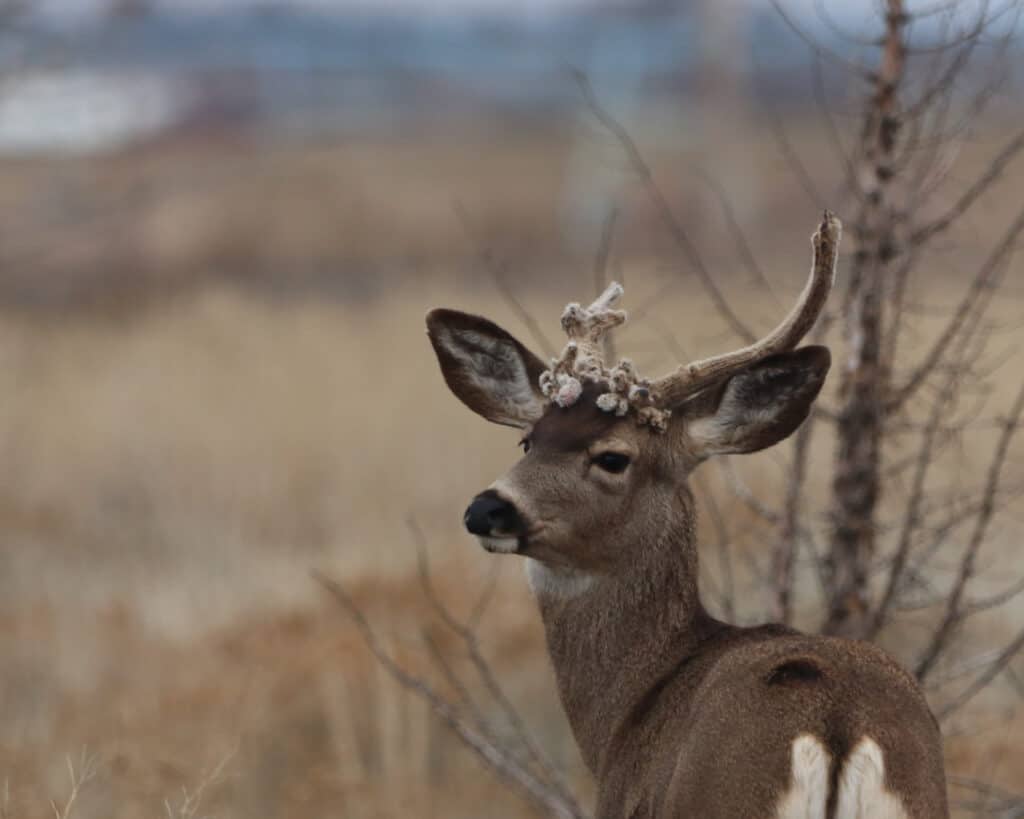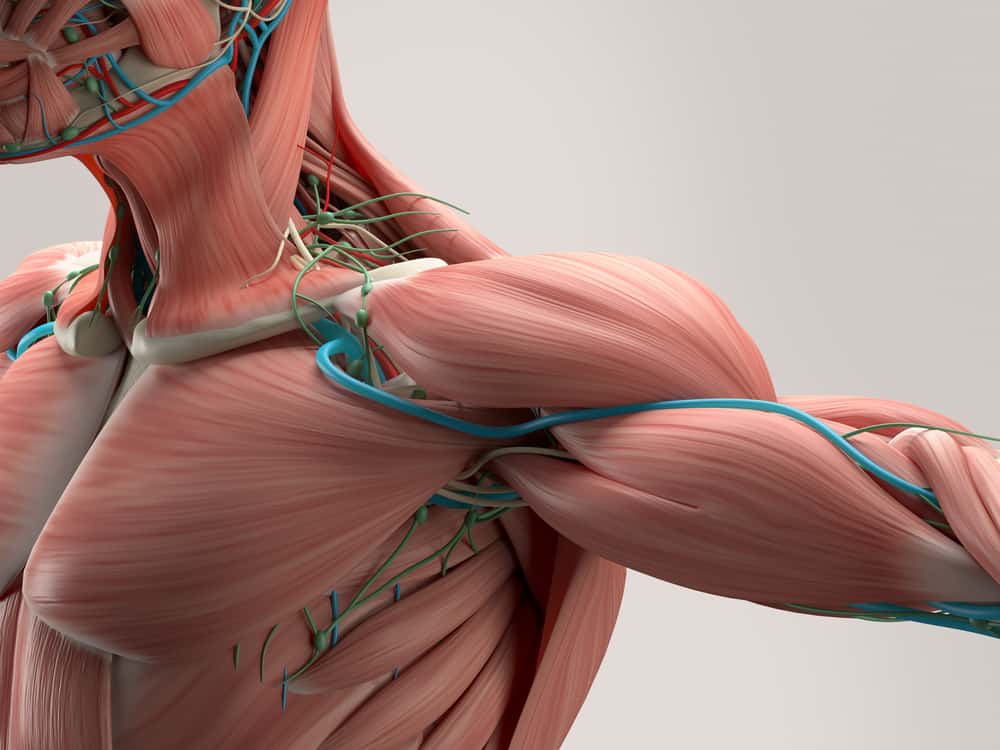While epizootic hemorrhagic disease isn’t always deadly like chronic wasting disease, deer still endure much suffering if infected. Some may even die if they have the fatal EHD form.
If you want to help the deer population or if you’ve spotted a sick deer and are wondering whether it has epizootic hemorrhagic disease, we’re here to help. Keep reading to learn what causes EHD, what symptoms deer show, and what you can do to contribute to EHD control!
What Is Epizootic Hemorrhagic Disease?

Epizootic hemorrhagic disease (EHD) is an infectious illness caused by a virus from the
Orbivirusgenus.
©iStock.com/Mickilu
Epizootic hemorrhagic disease (EHD) is an infectious illness caused by a virus from the Orbivirus genus. It primarily affects white-tailed deer and is most common in the southern United States. Besides white-tailed deer, elk and mule deer were also diagnosed with EHD. Other species, like fallow deer, roe deer, red deer, and black-tailed deer, were seropositive. This means they got into contact with an infected deer but did not spread the virus. EHD was also identified in cattle and sheep, although their condition wasn’t as serious as deer’s.
Besides North America, EHD was found in Asia, Australia, Africa, the Middle East, and South America (seropositive animals only). Since the spread of the disease depends on the fly or midge population, its distribution is linked to it, too. Moreover, the number and the location of the EHD-infected individuals depend on how strong the deer’s immunity is and the deer’s genetic variations in susceptibility.
One of the largest EHD outbreaks occurred in 2020 in the lower Hudson Valley. Around 1,500 deer died because of EHD. In 2021, another outbreak caused 2,000 deer deaths.
What Does EHD Look Like in Deer?
In short, this disease damages the blood vessels, thus causing multiple hemorrhages in the heart, spleen, liver, lungs, kidneys, and intestinal tract. Symptoms may occur as early as seven days after exposure. Noticing these signs is of utmost importance since establishing an early treatment plan may greatly reduce the animal’s discomfort and pain.
The deer can develop peracute, acute, or chronic EHD.
EHD symptoms in deer include:
- Appetite loss
- Increasing weakness
- Loss of fear of people
- Rapid pulse and respiration rate
- Excessive salivation
- Fever
- Unconsciousness
- Bluetongue caused by lack of oxygen
- Head and neck swelling
- Tongue ulcers, bloody nasal discharge, and dental pad erosion
- Respiratory issues caused by heart or lungs hemorrhages
- Lymph nodes enlargement
You’re probably wondering if the disease is fatal, right? Well, not really, although this depends on the deer’s EHD form. You will notice broken hooves if the deer is sick with chronic EHD. However, deer with chronic EHD often recover after being sick for several weeks. The peracute EHD, on the other hand, is more serious, and deer can go into shock between 8 to 36 hours after the first symptoms appear, eventually dying. The acute form resembles the peracute one and may cause nasal discharge, skin hemorrhages, and excessive salivation.
Although the virus is strong, not all deer die from EHD. Some may survive the late illness stage, while others won’t show the slightest symptoms. Once the deer gets past the disease, its body starts producing antibodies.
How Do Deer Get EHD?

EHD is transmitted only if the carrier has bitten the deer.
©iStock.com/Mickilu
It is believed that EHD is transmitted by carrying midges, the most common being the Culicoides variipennis, a 0.039-inch long biting midge. Unlike chronic wasting disease, which can be transmitted from animal to animal, EHD is transmitted only if the carrier has bitten the deer. That’s why most EHD outbreaks happen sometime between August and October – afterward, the weather gets cold, and the midge dies, so there’s no one to transmit the disease.
Why Do Deer With EHD Go to the Water?
You probably already know that many deer sick with EHD may look for bodies of water. Why does this happen?
Since the disease causes deer to salivate excessively and have a high respiration rate, a rapid pulse, and a fever, most will try lying in the water to calm their bodies down and reduce the fever.
Can You Get EHD From Eating Deer?

Epizootic Hemorrhagic Disease isn’t transmissible to humans.
©Anatomy Image/Shutterstock.com
Fortunately, EHD isn’t transmissible to humans. Neither midge bites nor eating venison can get people infected with EHD. However, since this field hasn’t yet been fully studied and explored, avoiding consuming meat that might have belonged to a sick deer is generally recommended. Specialists believe it may cause other types of infections.
Is EHD the Same as Bluetongue?
Many people call EHD the bluetongue disease because EHD-infected deer often have blue tongues caused by lack of oxygen. However, although the symptoms are similar, the bluetongue disease is caused by the Bluetongue virus and is most common and more serious in cattle and other ruminants.
EHD Prevention and Control
Unfortunately, there aren’t any vaccines that would protect deer from EHD. The only way to prevent and control EHD spread is by reducing the midge population around livestock stables, adding screens with very fine mesh, strategic fan placing, using insecticides or larvicides, and removing breeding pools.
Suppose you’re a hunter and spot a sick deer showing any symptoms associated with EHD. You can help the deer population by reporting the sick deer’s location on the Indiana DNR’s Sick or Dead Wildlife Reporting System. Besides EHD, you can use this tool to report chronic wasting disease cases and recurring deer deaths in the same location.
Even though we can’t always help the animals in need, we can at least contribute to the species’ future!
Up Next:
- 10 Types of Deer Disease You Should Be Aware Of
- Deer Hooves: Everything You Want to Know About Deer “Feet”
- Chronic Wasting Disease (CWD) In Deer: What You Need To Know About “Zombie Deer”
The photo featured at the top of this post is © iStock.com/Mickilu
Sources
- Cornell Wildlife Health Center, Available here: https://cwhl.vet.cornell.edu/disease/hemorrhagic-disease-deer#collapse11
- Michigan DNR, Available here: https://www.michigan.gov/dnr/managing-resources/wildlife/wildlife-disease/ehd
- Purdue University Extension, Available here: https://www.purdue.edu/fnr/extension/be-on-the-watch-for-ehd-in-deer/
Thank you for reading! Have some feedback for us? Contact the AZ Animals editorial team.







